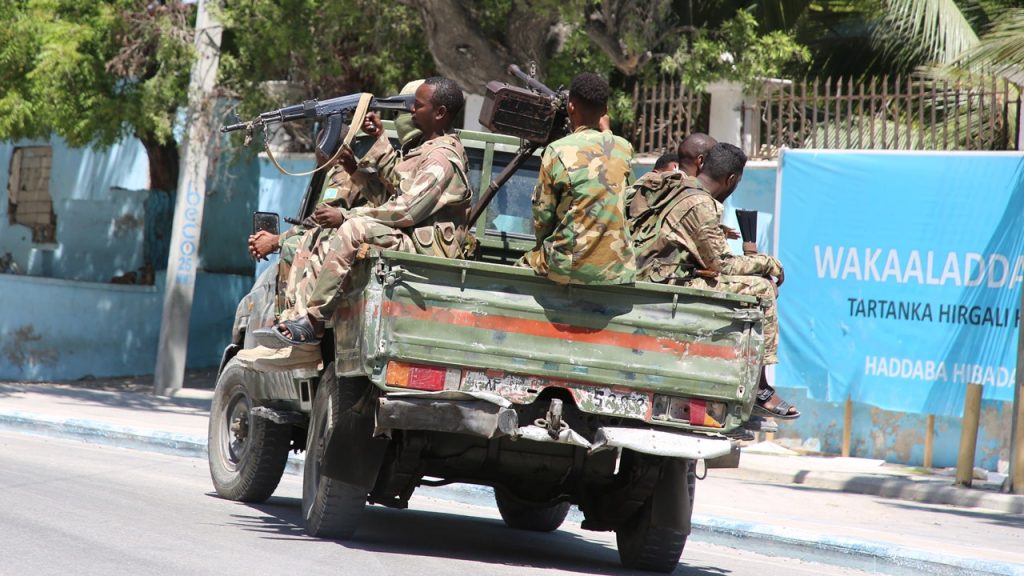In a significant development over the weekend, U.S. forces executed an airstrike targeting the al Qaeda-affiliated group al-Shabab in Somalia. Conducted by U.S. Africa Command (AFRICOM), this strategic operation took place approximately 40 miles northwest of Kismayo, aiming to counteract the rising threats posed by the extremist group in East Africa. As the region grapples with long-standing insurgencies, U.S. military actions continue to play a crucial role in support of Somali forces and the broader fight against terrorism.
| Article Subheadings |
|---|
| 1) Overview of U.S. Airstrike Operation |
| 2) The Threat Posed by al-Shabab |
| 3) Collaborative Efforts with Somali Forces |
| 4) Historical Context of the Somali Conflict |
| 5) Future Implications for U.S. Military Engagement |
Overview of U.S. Airstrike Operation
During the recent engagement conducted by U.S. Africa Command (AFRICOM), a targeted airstrike was executed against the extremist organization al-Shabab, known for its ties to al Qaeda. The operation took place in an area identified as a stronghold for the group, roughly 40 miles from Kismayo, illustrating the ongoing commitment of U.S. forces to disrupt terrorist activities. As indicated by AFRICOM’s press release, the airstrike was part of a broader strategy aimed at undermining the operational capabilities of al-Shabab.
The U.S. military’s assessment states that “al-Shabab has proven both its will and capability to attack U.S. forces,” reinforcing the necessity for continued military actions in the region. While no additional details regarding specific military units deployed or tactical elements were disclosed, such measures are likely aimed at ensuring the operational security of military efforts in the volatile region.
The Threat Posed by al-Shabab
Al-Shabab has emerged as a formidable threat in Somalia, conducting numerous attacks that have targeted both local and international interests. The group has been responsible for a series of high-profile bombings and assaults, highlighting its capacity to coordinate strikes against military personnel and civilians alike. The ongoing insurgency not only disrupts local governance but also hampers international efforts aimed at stabilizing Somalia.
The extremist organization’s intent to expand its influence in the region raises concerns about its potential to execute attacks beyond Somalia, posing a direct threat to U.S. interests and nationals abroad. The choice to target al-Shabab via airstrikes reflects a shift in military policy aimed at preemptively disrupting planned operations.
Collaborative Efforts with Somali Forces
U.S. military operations in Somalia increasingly rely on collaboration with Somali Armed Forces and the Federal Government of Somalia. As part of a coordinated effort to degrade al-Shabab’s capabilities, U.S. forces have provided airstrikes and intelligence, crucial for local military operations. The synergy between U.S. military assets and Somali forces has been paramount in addressing the security vacuum created by decades of conflict.
In fact, in a recent letter penned by Somali President Hassan Sheikh Mohamud, the government extended an offer to the U.S. for “exclusive operational control” over key military installations, including air bases and ports. Such a proposition indicates a desire for greater American engagement to bolster defenses against extremist groups like al-Shabab.
Historical Context of the Somali Conflict
The conflict in Somalia has its roots in political instability that has persisted over the last few decades. Following the collapse of Somalia’s central government in 1991, the nation descended into chaos, leading to the rise of various factions, including al-Shabab and other militant groups. This historical backdrop is essential to understanding the dynamics that continue to challenge Somalia’s aspiration for peace and stability.
The unrecognized republic of Somaliland, which declared independence from Somalia in 1991, represents another layer of complexity in the Somali conflict. Its assertion of independence has created tensions within the region as multiple factions vie for power and control, adversely affecting the broader stabilizing efforts by the international community.
Future Implications for U.S. Military Engagement
Looking ahead, the implications of the recent airstrike and ongoing military engagement in Somalia are significant. U.S. military operations are set to continue as the threat from al-Shabab remains evident. The collaborative approach involving local forces will likely dictate the effectiveness of future strategies in combating terrorism in the region.
Increased U.S. military presence, as evidenced by past collaborations and recent airstrikes, indicates a sustained commitment to stabilizing Somalia and counteracting the influence of extremist groups. This creates the potential for both strengthened security frameworks within Somalia and broader implications for U.S. interests in East Africa.
| No. | Key Points |
|---|---|
| 1 | U.S. forces conducted an airstrike targeting al-Shabab in Somalia. |
| 2 | The airstrike was executed approximately 40 miles from Kismayo, a known al-Shabab stronghold. |
| 3 | Al-Shabab has actively carried out attacks against both local and U.S. interests. |
| 4 | U.S. military operations are largely dependent on cooperation with Somali forces. |
| 5 | The long-standing conflict in Somalia continues to pose challenges to national and regional stability. |
Summary
The recent airstrike by U.S. forces against al-Shabab highlights ongoing military efforts to thwart terrorism in Somalia. With the backdrop of a complex and protracted conflict, the collaborative approach with Somali forces presents a framework for countering threats from extremist groups. The implications of these military operations extend beyond immediate security challenges, influencing regional stability and U.S. foreign policy in East Africa.
Frequently Asked Questions
Question: Why did the U.S. conduct an airstrike in Somalia?
The U.S. conducted an airstrike to target al-Shabab, a terrorist organization linked to al Qaeda, which poses a significant threat to U.S. interests and stability in the region.
Question: What role does the Somali government play in U.S. military operations?
The Somali government collaborates closely with U.S. forces, facilitating airstrikes and providing local intelligence to enhance military effectiveness against extremist groups.
Question: How does al-Shabab impact the security landscape in Somalia?
Al-Shabab has been responsible for numerous attacks in Somalia, destabilizing the government and creating a challenging environment for peace and development efforts in the region.
